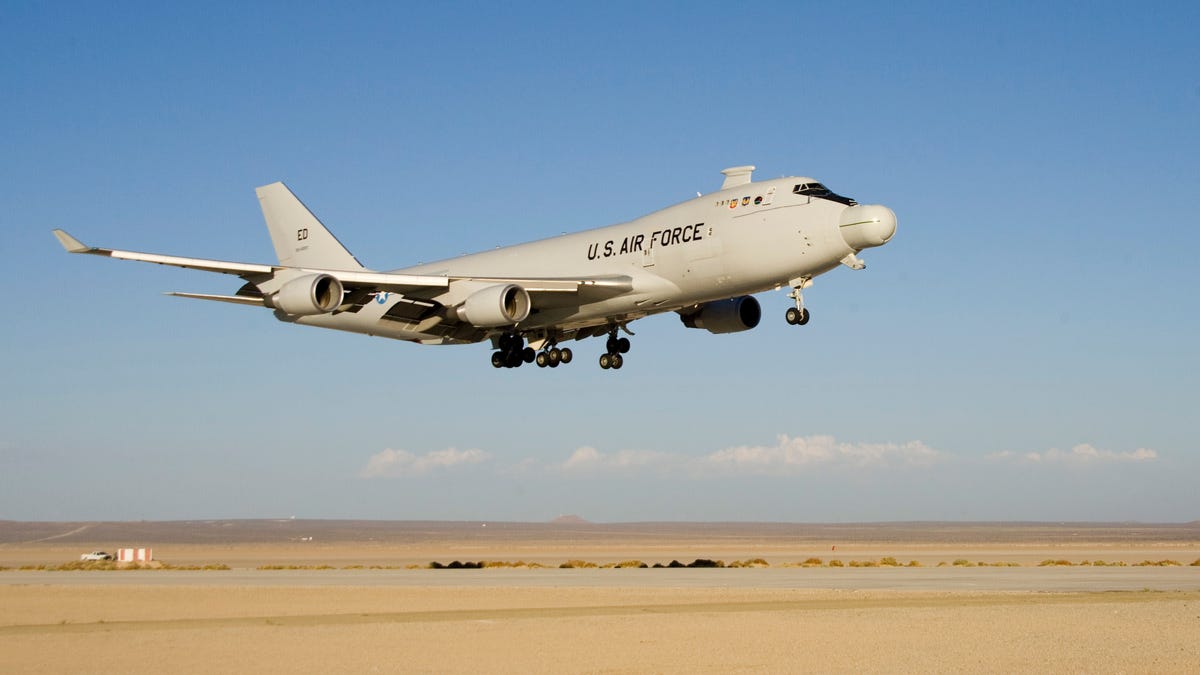Airborne Laser zaps in-flight missile
The proof-of-concept laser-equipped 747 takes out a ballistic missile in a bittersweet achievement for fans of directed-energy weapons.

Score one for the Airborne Laser.
In a milestone for the ambitious directed-energy project, now dramatically downsized, the Pentagon's Airborne Laser prototype weapons system destroyed a ballistic missile that was in flight. The shootdown took place February 11 off the central coast of California.
"The Airborne Laser Testbed team has made history with this experiment," said Greg Hyslop, vice president and general manager of Boeing Missile Defense Systems, in a statement released Friday. Boeing is the prime contractor for the Defense Department project.
The U.S. Missile Defense Agency was equally enthusiastic about the results. "The revolutionary use of directed energy is very attractive for missile defense," the agency said in a statement, "with the potential to attack multiple targets at the speed of light, at a range of hundreds of kilometers, and at a low cost per intercept attempt compared to current technologies.
Unfortunately for proponents, the achievement is rather bittersweet. Where the Pentagon once had plans to build as many as seven of the one-of-a-kind Airborne Laser aircraft, a modified Boeing 747-400F, the high cost and technical uncertainties of the program prompted Defense Secretary Robert Gates last spring to cancel plans to build a second plane. The Pentagon kept the existing one around as an R&D platform.
But as a proof of concept, the Airborne Laser most certainly crossed a threshold when it KO'd the missile earlier this month.
On the evening of February 11, an "at-sea mobile launch platform"--the MDA didn't specify whether it was surface ship or submarine--fired a short-range "threat representative" liquid-fueled ballistic missile while the 747 was in the vicinity.
Within seconds, the agency says, the aircraft detected the missile as it lifted off and used a low-energy laser (the Track Illuminator) to track it, followed by a second low-energy laser (the Beacon Illuminator) to assess and adjust for atmospheric disturbance. Then it engaged the powerhouse of the system, the megawatt-class High Energy Laser--Boeing calls it "the most powerful mobile laser device in the world"--which fires through a telescope located in the nose of the aircraft.
Within two minutes of the launch, while the missile's rocket motors were still firing, the chemical-derived High Energy Laser had heated a pressurized segment of the missile to "critical structural failure," the MDA said. The Track Illuminator and Beacon Illuminator are kilowatt-class solid-state lasers.
A short while later, a second, solid-fueled short-range missile took off from solid ground on San Nicolas Island, Calif., and the ABL likewise engaged it with the High Energy Laser, though it stopped firing the laser before destroying that missile. The MDA says that the ABL had met all test criteria, and besides, it had destroyed a similar missile in flight a week earlier.
Catching a missile during the boost phase has always been a central tenet of the ABL program--it's those first seconds and minutes, when the missile is moving most slowly and predictably, that make for the most vulnerable target. But that also was a significant argument against the system: How could the U.S. count on having a laser-laden aircraft in the right place at the right time to catch an enemy missile at take-off? Indeed, in canceling the second aircraft, Gates called the program's proposed operational role "highly questionable."
Last fall, the separate Airborne Tactical Laser aircraft, a modified C-130, hit a moving remote-controlled vehicle on the ground.

